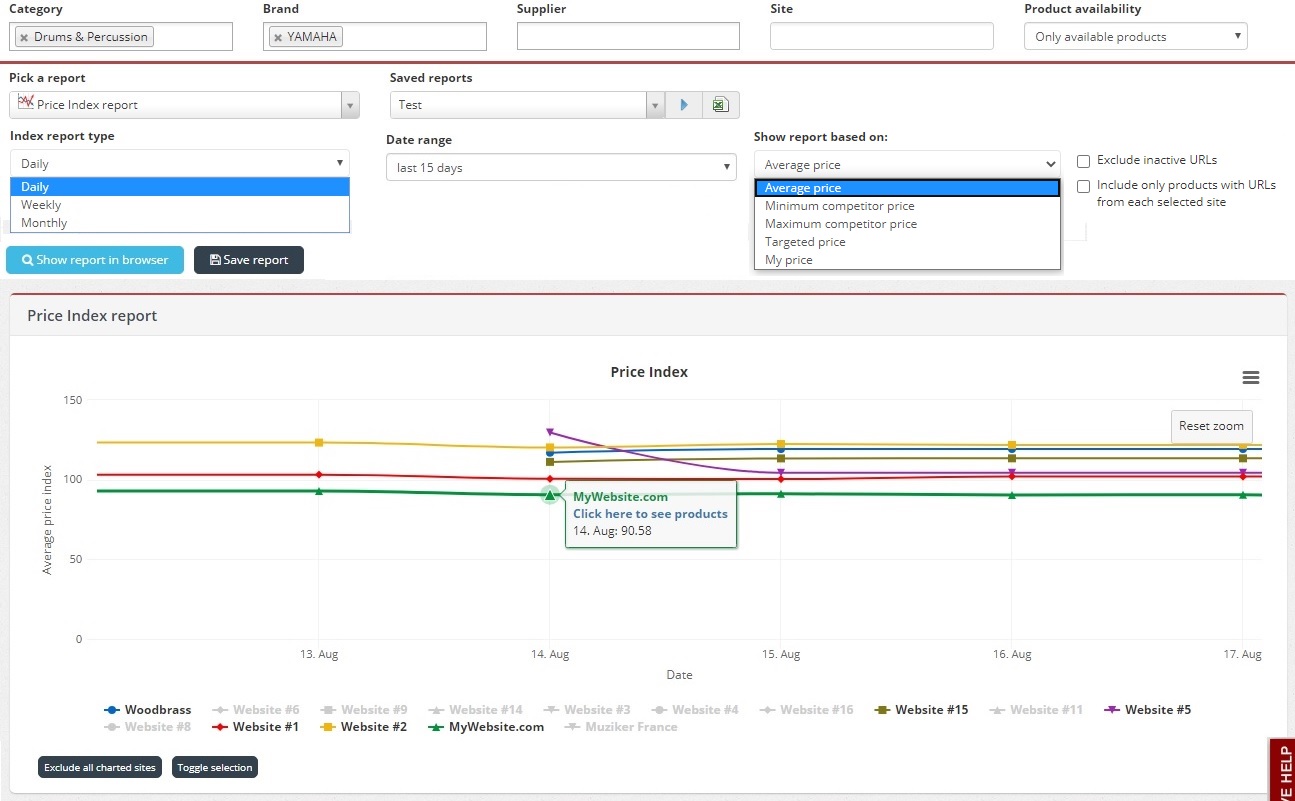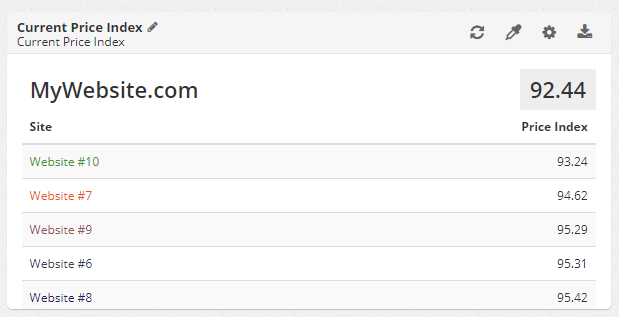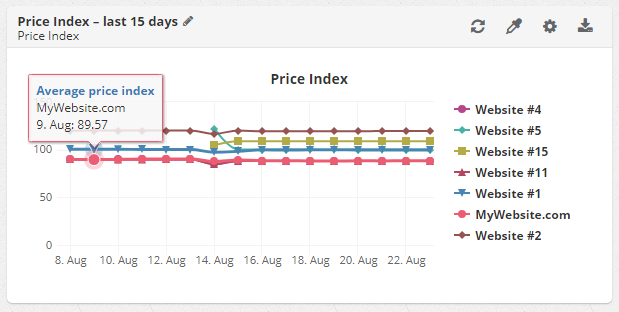Price index based on MIN/MAX market price
You often hear that setting the right pricing strategy for your business is the hardest thing to do. Over the years pricing professionals have come up with metrics for your pricing efforts – and it’s called Price Index. The price index represents the average of prices for given products (or services) during a certain period. When we say that we are talking about average prices, this methodology doesn’t seem particularly complicated. However, that’s not entirely true. Many economic studies have dealt with this topic with the aim of deciphering all the price index formulas that exist. Besides aiming to have an average price, many companies are now looking for a way to have the lowest/highest price on the market.
Price2Spy’s Price index can help you overcome these challenges.

Since every success starts with good preparation, let’s discuss what’s important to know about the Price index.
How does the Price index work?
The basics are known – the price of each individual product is compared and each product has its own index. Of course, the final price index is obtained when all the individual ones are calculated. Therefore, it’s clear that by default your price is being compared with the average price on the market.
There is nothing wrong with this method if your goal is to compare yourself with the rest of the market. Also, it’s a good option when you want to set your price as the average. By doing so, you’re able to see how the other competitor prices are fluctuating in comparison to yours.

These price index methods are offered by several other price monitoring tools, but what sets Price2Spy apart is the ability to show you where you stand in comparison to your cheapest (or most expensive) competitor.

Who should use the Price index based on the min/max price?
With such a long presence in the market, Price2Spy has faced various situations and customer requirements. As Price2Spy is a very generic tool, we had to find a way to satisfy customers whose needs are somewhat different than the general ones. Some clients are only interested in the average price, while others are interested in how to establish the cheapest / most expensive price on the market.
For example, one of our big clients, a multinational supermarket company, was one of the first clients to approach us with the idea of monitoring their own price index, compared to the cheapest competitor. After long discussions with the client, we have recognized their needs, and we have prepared the new option in Price Index calculation.
Put it simply, Price Index (vs cheapest competitor on the market) is an important KPIs for their pricing team – and they needed simple metrics to help them monitor that KPI.
Which Pricing Index option is right for you?
- If you base your position on the average market price – then we’d recommend Price Index based on Average price
- If you want to position your store against a particular competitor – then please select just these 2 sites, and run Price Index based on my own price
- If you aim to be the cheapest on the market – please use Price Index based on cheapest competitor
- If you aim to be the most expensive– please use Price Index based on most expensive competitor
- Finally, if you’re a brand who wants to monitor if its retailer adheres to agreed pricing policies, then please go for Price Index based on targeted price
Conclusion
Price monitoring tools are offering you numerous possibilities which can result in skyrocketing your sales. Yet, at the end of the day, you are the ones who know best your business and the goals you aspire to. Therefore, the first step needs to be done by you. Only when you are completely sure where in the market you want to position yourself, you should start working on a strategy. You know best where you want to position yourself, but Price2Spy is here to help you on your way to reaching the end goal. Amat victoria curam!
If you want to see for yourself why we’ve been the first choice of many clients for over a decade, we invite you to start your free Price2Spy trial.



